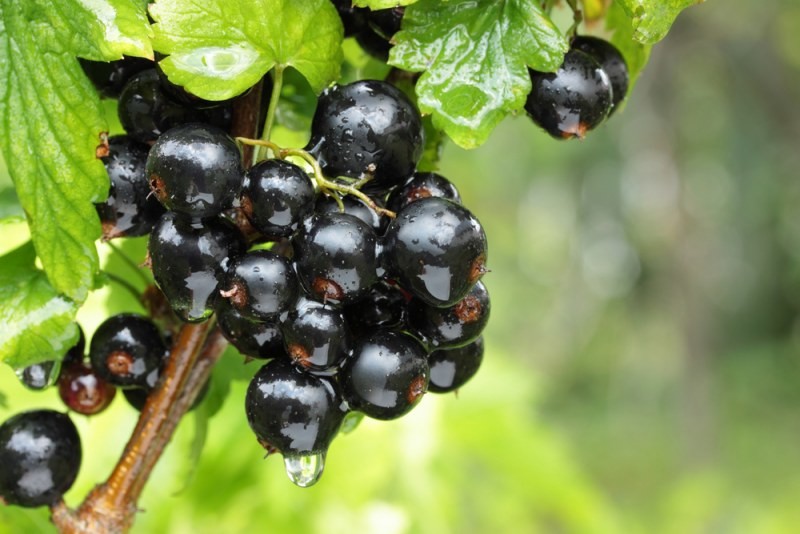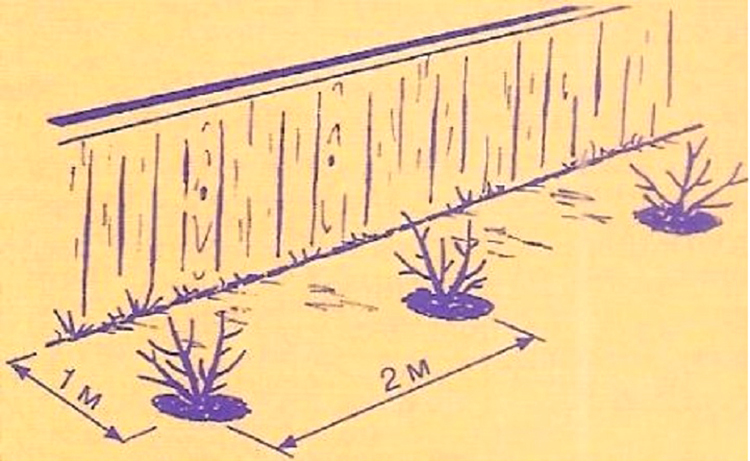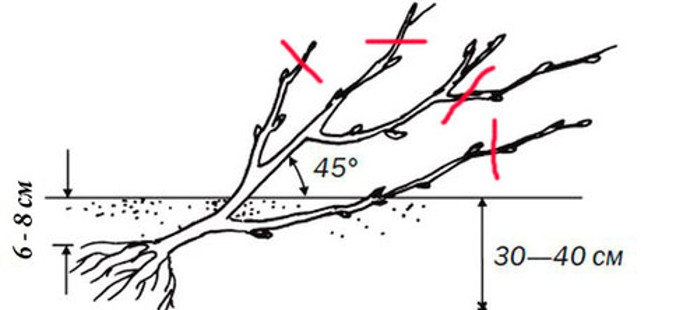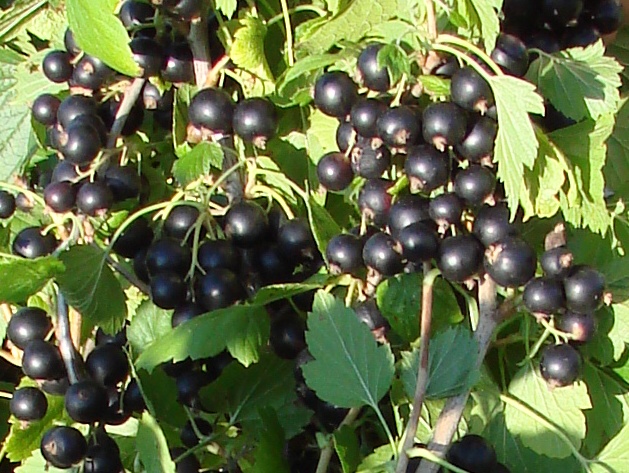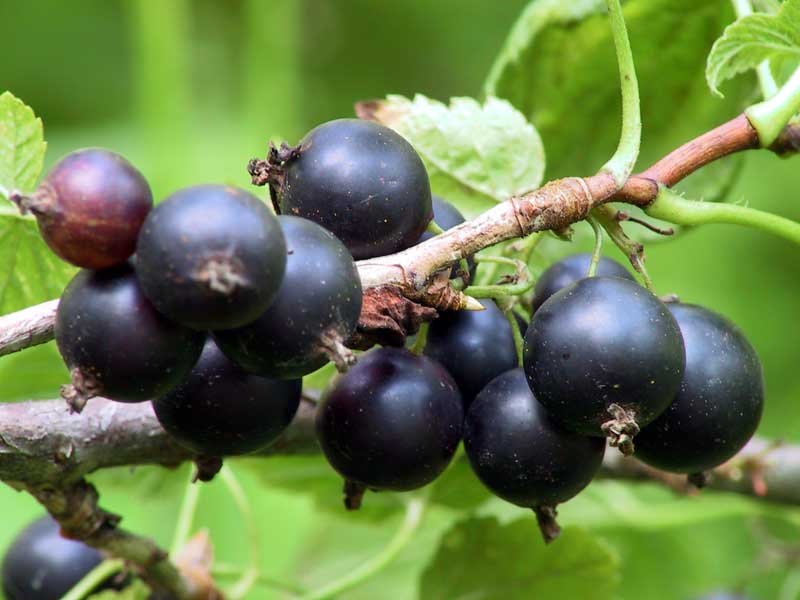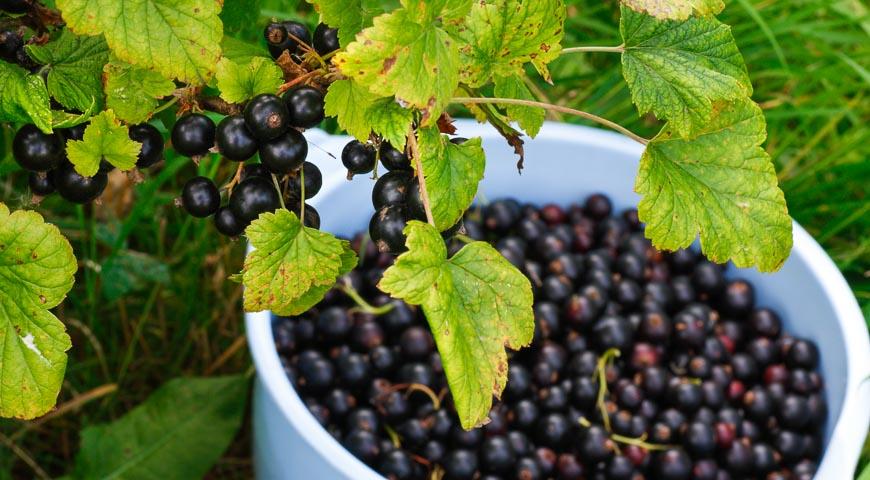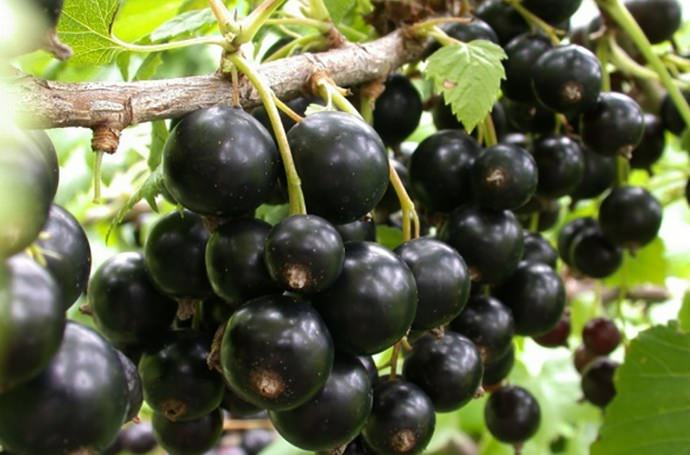Content:
Black currant is a popular berry, there are about 180 varieties. It is recommended to choose them, taking into account the area where it will be grown. The culture is self-pollinating and can grow as a single bush, but with the possibility of cross-pollination with other varieties, the berries are enlarged. It is most favorable to plant several varieties of different ripening periods. So the harvest will be throughout the season.
Some of the best varieties:
- Early ripe: Selechinskaya-2, Summer resident;
- Mid-season: Green haze, Dobrynya;
- Late ripening: Bummer, Bagheera.
Preparing for landing
Black currant is an unpretentious winter-hardy culture. With proper care, it can yield crops from one bush for up to 20 years. It is preferable to plant a seedling in autumn in September or November, a month before the first frost. After winter, currants wake up early, so you need to plant, choosing the month of April, as soon as the soil allows.
A sunny open area is preferable, but shaded areas are not suitable for all daylight hours. He does not like a plot with acidic soil, if the soil is like that, then it needs to be limed, preferably in a year, during autumn digging. Currant, which is black, is more moisture-loving than the others, but does not like stagnation of water and close groundwater, in this case it is required to arrange drainage.
Planting correctly for good yields and increased crop life, keeping the distance between adjacent bushes. It should be 2 m, and if the planting is planned near the hedge, then the distance from it to the bush is 1 m. So the bushes will receive good illumination, it will be convenient to look after them and pick berries.
When choosing a seedling, the main attention should be paid to the root system, it is fibrous, should be well developed, with 3-4 lignified roots 20 cm long. The length of the seedling from the base is 40-50 cm with 2-3 shoots, without stains and damage. During transportation, to preserve moisture, the roots are wrapped in a damp cloth. If the roots are dry, you should soak them in water for several hours, if they dry out strongly, leave them in water for a day. Cut off the damaged ends of the roots before planting.
The planting pit is prepared just before planting, the size of a seedling, but not less than 40 cm on all sides and depth. Set aside the fertile layer separately. Loosen the bottom of the pit, fill in compost, when using mineral fertilizers, add 200 g of superphosphate, 50 g of potassium salt, mix with compost. Then fill up the deposited fertile soil layer. Place the seedling in the hole at an angle of 45 degrees. Deepen by 10 cm. So that voids do not form between the roots, falling asleep with soil, the seedling must be slightly shaken several times. Water the planting. In dry weather, watering should be repeated after 3 days. Cut the shoots into 3-4 buds, counting from the base of the bush.
It is better to make a fence for an adult bush removable, for easy inspection and pruning of branches.
The berries are picked 2-3 years after planting. An early variety will give its first harvest in early July.
Growing and care
Tips from seasoned gardeners on caring for black currants in the spring are in mandatory preventive examinations. Before bud break, when the snow has not yet completely melted, black currants are cut from old, non-fruiting branches using a sharp garden tool. There should always be more young shoots on the bush than perennial ones. Pruning can be done all summer. Cover the sections with charcoal. Sick, suspicious branches are burned.
Black currant is a moisture-loving plant, with a lack of water, the growth of shoots slows down, the berries do not gain volume, but it does not like overflow either. 4-5 waterings per season are preferred: during flowering, ovary formation, pouring berries and always after harvest. The bush may not overwinter well if it has been standing in dry soil for a long time.
Black currant care and cultivation also consists in feeding. The shrub is not indifferent to starch. An increase in the yield before flowering and during the pouring of berries is facilitated by nutritious carbohydrate feeding from the infusion of potato peelings. A glass of dry potato peel is poured into 3 liters of boiling water, the heat is turned off and the container is wrapped so that the infusion cools down for a long time. The infusion is poured under the bush. Cleansers can be poured without making an infusion.
Ashes from deciduous trees are well suited for feeding, but not from conifers. The ash contains potassium, phosphorus and magnesium, which are necessary for the culture. Sprinkle over the soil or prepare solutions. After watering with an ash solution, the berries become larger.
They use complex mineral fertilizers and mullein.
Reproduction of black currant
Currants are one of the crops that can be easily propagated by choosing healthy bushes for this. This can be done in several ways:
- By cuttings. In spring or autumn, an annual branch is cut off, three buds should be present on one cutting, the cut is made close to the bud, from below - straight, from above - obliquely. They put it obliquely in the ground, you can make several landings in one hole;
- Layers. A method in which a 1-2 year old lower branch is taken away from an existing bush, placing it in a dug groove, 5 cm deep, horizontally to the ground, so that the top of the branch remains not buried. They are pressed to the ground with a wooden spear and covered with several centimeters of earth. The branch should not be buried deep. The soil must be moist. In autumn, the cuttings will give a new shoot from each bud, then carefully dig out the branch and divide it into separate seedlings;
- By dividing the bush. This method is suitable for replanting shrubs to a new location. The bush is completely dug up and examined to determine the full-fledged parts into which it can be divided, cut or sawn and re-planted in separated parts.
Disease and pest control
The varieties are bred with resistance to some diseases. But the currant has enough pests that are capable of damaging or destroying the bush completely.
A bud mite settles in the buds of a plant, which makes them look thickened, inflated. For prophylaxis, spring hot watering of the bush is used, before bud break: pour the bush on top from a watering can with as hot water as possible.
Glassy - at first glance, the bush may not look infected, but it begins to wither, the infection can only be determined by cutting off the branch, the core in this case will be black, the pest settles inside the branches. It is very difficult to cure a bush from a glass, it is recommended to regenerate by cuttings, as a rule, with the complete destruction of the infected bush.
Gall aphids are identified by the appearance of bloated leaves, the same color or red.Aphids settle in the leaf plate between the top and bottom layers and are difficult to destroy. The leaves must be torn off and only burned, and it is also necessary to deal with litter, in which gall aphids may be present.
The fight against such pests involves proper care, sanitary inspections, weakened branches are affected more often, transferring the disease to healthy ones, spraying with insecticides in spring and autumn.
Powdery mildew - a white bloom on the bush, a dangerous disease. Damp hot weather contributes to the spread. To fight, sprayed with mullein infusion.
The rest of the pests, for example, other varieties of aphids, are not so dangerous to the culture and can be treated with biological products.
Black currants are the undisputed storehouse of health. A handful of berries are enough to meet the daily need for vitamins. Almost no dacha is complete without this culture; with proper care, the taste of the crop increases.
